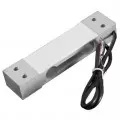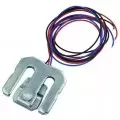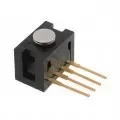OUTLINE:
Understanding Force Sensors from Principle to Industry Chain
 193
193Ready to decode the secrets of force sensors? Step into the world where science meets innovation, as we unravel the mysteries behind these remarkable devices.
Whether you're a rookie or a tech aficionado, this guide is your passport to understanding force sensors from the ground up.
Get set to embark on a journey of discovery, where each revelation promises to elevate your understanding and empower you to navigate the complexities of force sensor technology with confidence.
Brace yourself for an adventure like no other—let's delve into the fascinating universe of force sensors together!
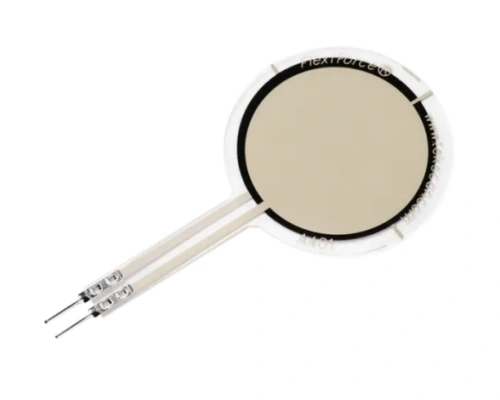
Image Source: Mouser
Understanding Force Sensors: The Definition&Application
Force sensors, often referred to as load cells or force transducers, are integral instruments employed across a multitude of industries to measure the magnitude and direction of force exerted on an object.
Utilizing advanced principles such as piezoelectricity and strain gauges, these sensors convert mechanical force into precise electrical signals, offering invaluable insights into the dynamics of force interactions.
In manufacturing and engineering, they serve as critical components of quality control systems, vigilantly monitoring force exertion in automated assembly lines to detect deviations that could compromise product integrity.
Additionally, their seamless integration into robotics and machinery enables precise object manipulation and control, optimizing efficiency and productivity in industrial settings.
The healthcare sector harnesses the capabilities of force sensors for both diagnostic and therapeutic purposes, revolutionizing treatment approaches and patient care.
Within biomechanical studies, force sensors play a pivotal role in analyzing the forces involved in human movement, facilitating the assessment of musculoskeletal conditions and the development of tailored rehabilitation strategies.
Furthermore, their integration into prosthetic and orthotic devices ensures adaptability to users' movements, enhancing comfort and functionality.
This symbiosis of technology and healthcare underscores the profound impact of force sensors in improving mobility and quality of life, exemplifying their versatility and significance beyond traditional industrial applications.
What Are the Advantages of A Force Sensor
Force sensors offer numerous advantages across various applications due to their precision, versatility, and ability to provide real-time data. Some key advantages of force sensors include:
Precision: Force sensors provide accurate measurements of force, allowing for precise control and monitoring of processes.
This precision is crucial in industries such as manufacturing, where even slight deviations in force can impact product quality.
Versatility: Force sensors come in a variety of types and configurations, making them adaptable to different environments and applications.
Whether integrated into industrial machinery, medical devices, or consumer electronics, force sensors can be tailored to meet specific requirements.
Real-time data: Force sensors provide real-time feedback on force exertion, enabling immediate adjustments to be made if necessary.
This real-time data is invaluable in applications where safety, efficiency, and performance are paramount.
Non-invasive measurement: Many force sensors are non-invasive, meaning they can measure force without physically contacting the object being measured.
This is particularly advantageous in applications where contact may affect the integrity of the object or where non-destructive testing is required.
Enhanced safety: By accurately measuring force, force sensors contribute to enhanced safety in various contexts.
For example, in automotive applications, force sensors are used in airbag systems to detect collisions and deploy airbags with the appropriate force to protect occupants.
Efficiency and productivity: In industrial settings, force sensors help optimize processes by ensuring that the right amount of force is applied at the right time.
This leads to increased efficiency, reduced waste, and higher productivity.
How does A Force Sensor work[Detailed Explanation]
A force sensor, like a strain gauge force sensor, functions by converting mechanical force into an electrical signal through the deformation of a sensing element containing strain gauges.
These strain gauges, arranged in a Wheatstone bridge configuration, change their electrical resistance when subjected to force, creating an output signal proportional to the applied force.
Calibration establishes a relationship between the output voltage and the applied force, ensuring accuracy. Widely used in industries such as automotive, aerospace, and manufacturing, force sensors provide crucial measurements for tasks like load monitoring and material testing, enhancing efficiency and safety across various applications.
What is the Difference between Force Sensor and Pressure Sensor
The primary difference between a force sensor and a pressure sensor lies in the type of physical quantity they measure and the application in which they are used.
Measurement Type
Force Sensor: Measures the force applied to an object, typically in the form of compression, tension, or shear force. Force sensors quantify the magnitude and direction of the applied force.
Pressure Sensor: Measures the pressure exerted by a fluid (gas or liquid) on a surface. Pressure sensors gauge the force per unit area exerted by the fluid, commonly expressed in units such as pounds per square inch (psi) or pascals (Pa).
Application
Force Sensor: Commonly used in applications where direct force measurement is required, such as load monitoring, material testing, and robotic grippers. Force sensors are crucial in tasks that involve the manipulation, control, or monitoring of mechanical forces.
Pressure Sensor: Found in applications where pressure measurement is essential, such as industrial processes, automotive systems (e.g., tire pressure monitoring), medical devices (e.g., blood pressure monitors), and environmental monitoring (e.g., weather stations). Pressure sensors are vital for tasks that involve monitoring fluid pressure levels and ensuring optimal performance and safety.
Force Sensor Calibration
Usually, calibration is done using complex hydraulic tension/press machines or static loads. This system is cumbersome to set up in order to ensure safe loading. When calibrating piezoelectric force sensors, the system's acquisition function needs to support both piezoelectric sensors and strain load sensors (reference sensors). The maximum calibration range of this system can reach 20,000lbf (99KN).
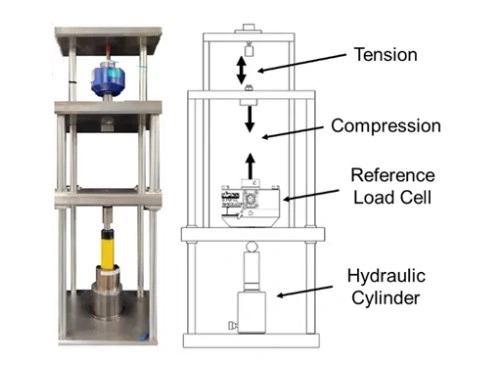
Another alternative method is to use gravity calibration, using gravity as a reference, and a single-channel acquisition system can calibrate the force sensor. However, the reference mass block used in this gravity calibration is relatively small, so the range it can calibrate is very limited. For a large-range force sensor, it cannot be calibrated within the entire range. Its range depends entirely on the size of the mass block. The mass blocks provided by PCB®'s force sensor calibration system are 1lbf (4.5N), 2lbf (9N) and 3lbf (13.4N), as shown in the following figure:
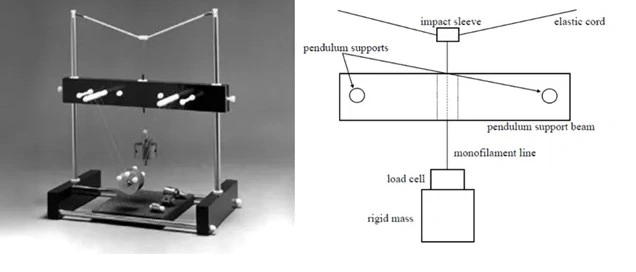
How many Types of Force Sensors Are there & What Are they
Some common types include:
- Strain Gauge Force Sensors: These sensors utilize strain gauges bonded to a flexible material. When force is applied, the strain gauges deform, causing changes in electrical resistance that can be measured to determine the applied force.
- Piezoelectric Force Sensors: Piezoelectric force sensors generate an electrical charge when subjected to mechanical stress. This charge is proportional to the applied force and can be measured to determine force magnitude.
- Capacitive Force Sensors: Capacitive force sensors measure force by detecting changes in capacitance between two conductive plates as they move closer together or further apart under the influence of applied force.
- Optical Force Sensors: Optical force sensors use light-based techniques, such as fiber optics or interferometry, to measure changes in distance or deformation caused by applied force.
- Magnetic Force Sensors: These sensors detect changes in magnetic fields resulting from the displacement of a magnetic material under applied force.
- Load Cells: Load cells are specialized force sensors designed to measure weight or mass. They often employ strain gauges or other sensing elements to detect force and are commonly used in scales, balances, and industrial weighing systems.
Final Verdict
Force sensors play a vital role in various industries by accurately measuring force and facilitating critical processes.
From strain gauge force sensors to piezoelectric, capacitive, and optical variants, each type offers unique advantages and is suited to specific applications.
Whether monitoring assembly line processes, optimizing robotic operations, or ensuring precise measurement in biomedical devices, the versatility and precision of force sensors are indispensable.
Understanding the different types of force sensors and their respective principles empowers engineers, researchers, and manufacturers to select the most appropriate sensor for their needs, thereby driving innovation and efficiency across diverse fields.
As technology continues to advance, force sensors will undoubtedly remain integral components, enabling progress and enhancing safety and performance in countless applications.

Disclaimer: The views and opinions expressed by individual authors or forum participants on this website do not represent the views and opinions of Chipsmall, nor do they represent Chipsmall's official policy.

share this blog to:


